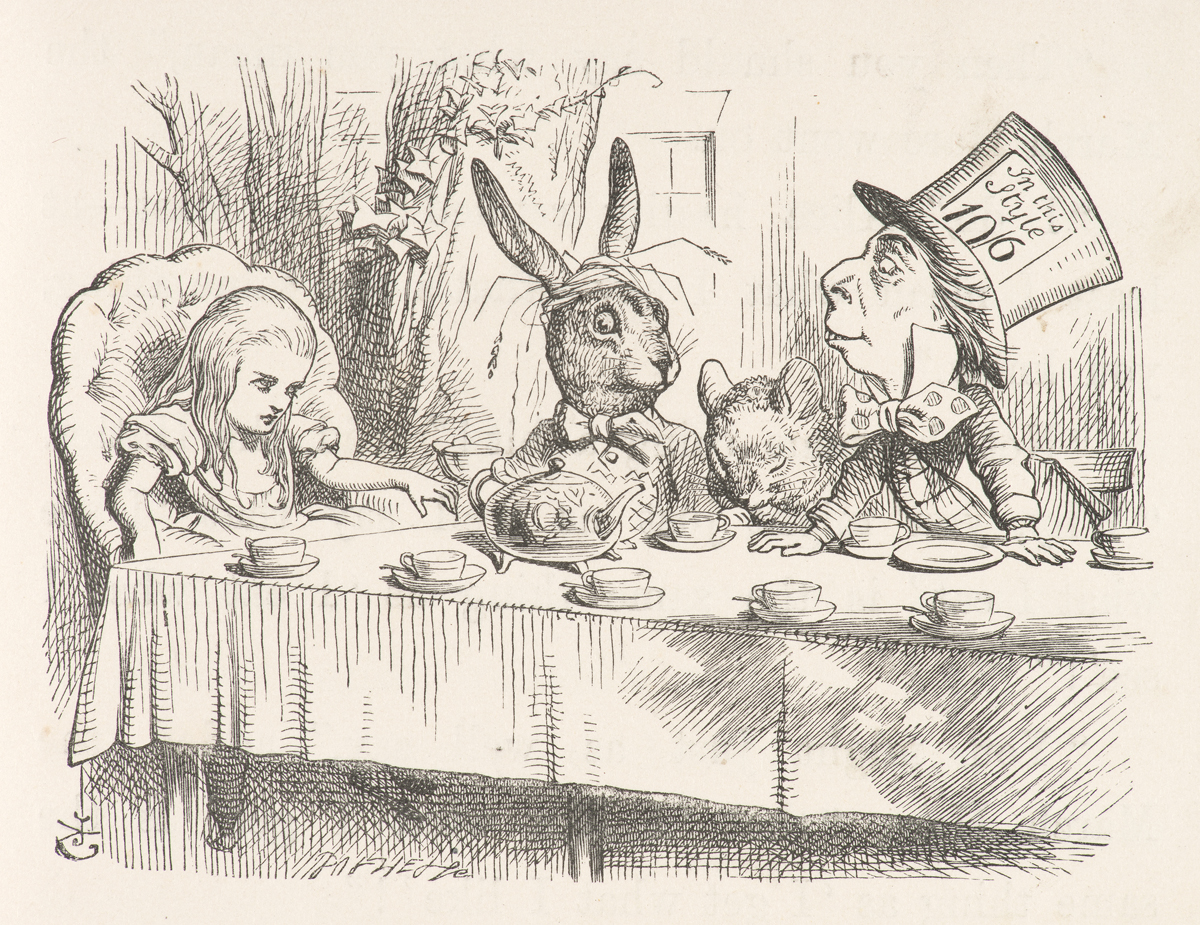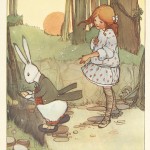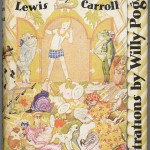
Sir John Tenniel. Dalí. Yayoi Kusama. What do these artists of vastly different styles, mediums, and artistic movements have in common? Each, along with many other artists, has tried their hand at illustrating Lewis Carroll’s classic Alice’s Adventures in Wonderland, a tale so whimsical it demands illustrations. Alice appeals to such a broad range of artists because the creative quality of the story gives artists freedom to interpret the look of the story in any way they please, and the book’s quirky sense of fun is irresistible.
The novel’s first illustrator was none other than its author. Charles Lutwidge Dodgson—alias Lewis Carroll—created a handwritten manuscript with 37 illustrations for the story’s muse, Alice Liddell, after she asked him to write down the fantastical story he told her one lazy summer afternoon on a boat ride. Although somewhat amateurish, the ink illustrations depict a sweet, pretty Alice, not unlike the famous Tenniel illustrations. Indeed, Tenniel, a famous Victorian political cartoonist, and Dodgson worked closely together in creating the now-classic illustrations for the first published edition.
Tenniel’s classical and rather prim imagining of Alice remained the standard throughout the nineteenth century and still remains the most recognizable Alice illustration today. It was not until the turn of the twentieth century that other illustrators tried their hands at Alice. These illustrations reflect the aesthetic of their time. Mabel Lucie Attwell’s 1910 rendering of Alice and Margaret W. Tarrant’s 1916 version are sweet and feminine and still very much geared toward a young audience.
By the middle of the century, illustrations of Alice became more experimental. German illustrator Wiltraud Jasper’s 1958 version is edgy and minimal, all in black and red. In 1969, iconic surrealist Salvador Dalí put his spin on Carroll’s story, creating a dreamy, abstract, and characteristically melty Wonderland in a melancholy color palate.
More recently, Japanese pop artist Yayoi Kusama has re-imagined Alice in her signature polka dots in a 2012 Penguin publication of Alice’s Adventures in Wonderland. Kusama steers away from the “classic” scenes of illustrations and instead focuses on details. For instance, the Mad Tea Party chapter features a red-and-black polka-dotted bowler hat instead of the traditional scene of the eccentric cast of characters tucking into high tea at a long table.
At the very onset of her story, Alice muses to herself about the importance of illustrations: “‘And what is the use of a book,’ thought Alice, ‘without any pictures?’” What use indeed? Would Alice’s Adventures in Wonderland be the classic book and cultural phenomenon that it is without pictures? Likely not—both readers and illustrators alike have fun with the creative freedom offered by the Alice books.
See examples of some of these illustrations in the Ransom Center’s current exhibition Alice’s Adventures in Wonderland, on view through July 6. Share with #aliceinaustin.
Please click on the thumbnails to view larger images.


